I visited Gujarat for the first time in many, many years, to take in the development at the grassroots in one of its most backward, tribal “aspirational district” of Narmada that host the world’s largest statue of Sardar Vallabhai Patel christened Statue of Unity.
Once I had been to Gandhinagar way back in the 90s, and this was the second time over the past week, the difference was stark – as the backward district of Narmada appeared in no way less than any developed one, to my naked eyes.
Yes, a few villages are cut off from the rest of the state when there are monsoon floods, but that is just about it. The tribal-dominated district of Narmada boasts of cemented roads deep inside villages, doorstep delivery of drinking water, and electricity, pucca cemented houses, and all other visible signs of development.
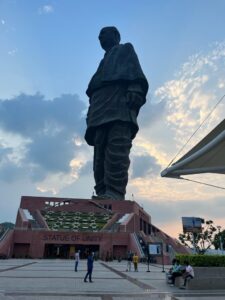 Gujaratis by nature are an enterprising lot and know how to take full benefit of government programmes, of the state and the central government. To cite a small example, Anganwadi centres in this district have managed to tap into the MNREGA scheme to get their kitchen gardens done under the scheme for which the central government pays. These kitchen gardens generate enough vegetables and leafy nutritious dietary requirements of the children enrolled in the centres.
Gujaratis by nature are an enterprising lot and know how to take full benefit of government programmes, of the state and the central government. To cite a small example, Anganwadi centres in this district have managed to tap into the MNREGA scheme to get their kitchen gardens done under the scheme for which the central government pays. These kitchen gardens generate enough vegetables and leafy nutritious dietary requirements of the children enrolled in the centres.
This tiny village of Gajargota in Dediyapada block of Narmada district has an Anganwadi centre that also runs programmes for adolescent girls to reduce Anaemia and improve general health through vitamin, protein and nutritious supplements under various schemes run jointly by the government and developmental agencies like the UNICEF.
Anganwadi worker Sangita Ben Vasava, 30, and Neelam Ben, Child Development Block Officer, Government of Gujarat at Nivalda village nearby reel of facts and figures, and all the schemes that are in operation at the centre for the benefit of children, adolescent girls, pregnant women, and lactating mothers. Case studies are readily at hand to showcase the progress of their work, and of goals to be achieved.
Yes, said Krishna Ben, in charge of Anganwadi centres across the district as a Gujarat Government officer “continuous monitoring of data emanating from the Anganwadi centres helps in proper evaluation of the efficacy of various schemes. We are also using Apps and online tracking of supplies, distribution of nutrient food packets to beneficiaries so that each item can be tracked at each of its journey stages.”
Whether it is the number of milk packets for children or nutrient food packets for adolescent girls’ mothers – everything is recorded on a mobile App and then the data is uploaded once the phones reach an area where there is internet connectivity, Krishna said adding that “our department has worked out ways and means to get around the problem of poor network and internet connectivity in far-flung rural areas.”
Where the government officials and specialist consultants of organisations like UNICEF and other NGOs come into these development programmes is in training the Anganwadi workers, and helpers so that they can effectively implement and monitor all the schemes, for the policymakers to make the right interventions, as and when necessary.
This is what is helping Narmada, along with the other backward district of Dahod, make progress in this development work that lifts the overall socio-economic parameters of the regions in question.
It is a healthy partnership of the government and developmental agencies one can witness in Gujarat, in a host of initiatives aimed at strategies related to child survival that include WASH, Health, Nutrition and SBC. Going around villages of Gajargota, Nivalda and Kanbudi villages in Dediyapada block and Pratapura and Nava Vaghpura of Nandod and Garudeshwar blocks, the one thing that strikes a visitor is that Anganwadi centres have become the nerve centres of development activity – in which even Panchayat takes a keen interest.
One can also see a skilful merger and marriage of initiatives like weaving in MANREGA with PURNA (Prevention of Undernutrition and Reduction of Nutritional Anaemia), Poshan Sudha in which one full, balanced, nutritious meal is given to young mothers and pregnant women besides free rations for a month.
Here the Anganwadi workers integrate essential nutrition and health services –where the pregnant women and young mothers are given counselling on how to cook nutritious meals at home.
The various health and nutrition programs – Poshan Sudha Yojna (one full meal scheme), Doodh Sanjeevani Yojna, Early Childhood Development Project, Integrated Management of Severe Acute Malnutrition program (SAM), Mukhamantri Matrushakti Yojana, PURNA being undertaken with collaboration between the government of Gujarat, UNICEF and other NGOs are making a difference on the ground.


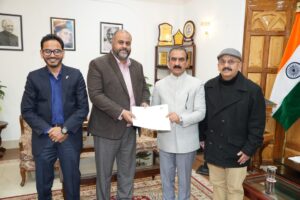
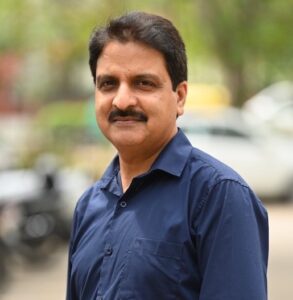
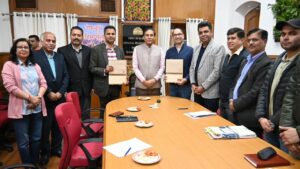
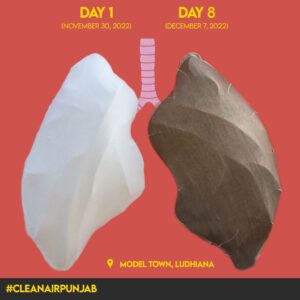

Comments are closed.